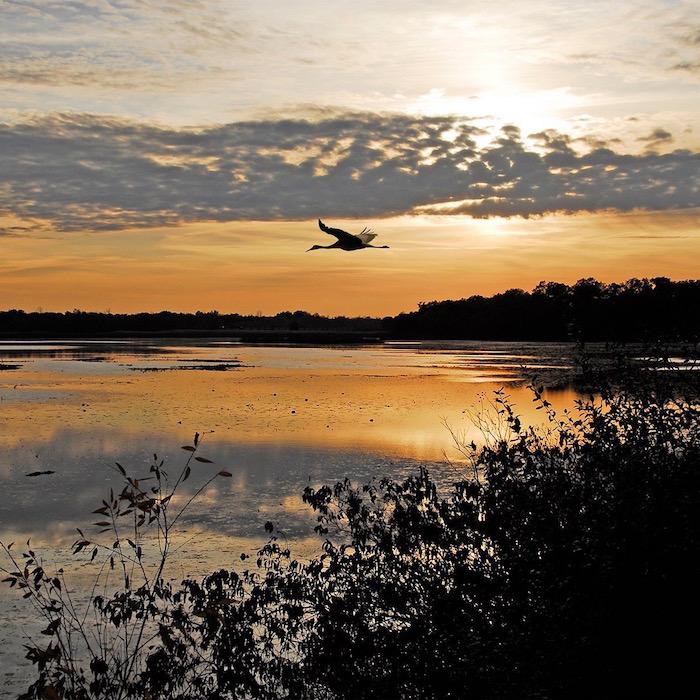
Should Indiana Dunes National Lakeshore be renamed as a national park?/NPS
Since it was authorized in 1966, Indiana Dunes National Lakeshore in Indiana has always been known as a national lakeshore. But now some members of Indiana's congressional delegation think it should be renamed a "national park."
On Wednesday the Senate Subcommittee on National Parks will consider their legislation. In doing so, the politicians note that as long ago as 1916 there was a suggestion that within that area there be a Sand Dunes National Park established.
In further justifying the name change, the proposed legislation notes that the Great Lakes form the largest freshwater system on Earth, that Lake Michigan is the second largest Great Lake by volume, that the southern shore of Lake Michigan includes some of the most geologically and biologically diverse areas in the United States, that the “Indiana Dunes” were formed over a period of 12,000 years by natural forces, including glaciers, wind, and water, and that Indian tribes, including the Miami and Potawatomi Indian tribes, inhabited the Indiana Dunes region for over 10,000 years.
The legislation also points out that "local conservation efforts to preserve the Indiana Dunes began as early as 1899 when Henry Cowles, a botanist from the University of Chicago who is known for being one of the founders of contemporary ecological study and thought, published an article entitled “Ecological Relations of the Vegetation on Sand Dunes of Lake Michigan” in the Botanical Gazette, bringing international attention to the intricate ecosystems on the Indiana Dunes. On October 30, 1916, 1 month after the establishment of the National Park Service, Stephen Mather, the first Director of the National Park Service, held hearings in Chicago, Illinois, to gauge public sentiment on establishing a large portion of the southern shore of Lake Michigan as one of the first national parks in the United States, to be known as the “Sand Dunes National Park."
However, Mather's plans were interrupted because the United States entered World War I and national focus shifted away from national parks to national defense.
The measure is scheduled to be considered when the subcommittee meets Wednesday at 4 p.m. local time.

 Support Essential Coverage of Essential Places
Support Essential Coverage of Essential Places







Comments
An electronic copy of the Report on the Proposed Sand Dunes National Park Indiana, written by Mather and published in 1917 can be read online at: http://npshistory.com/publications/sand-dunes-np.pdf
Indiana Dunes is one of the most ecologically diverse parks in the country. It has more plant species than Yellowstone, more mammal species than Acadia, and as many bird species as Everglades. The park has Lake Michigan shoreline, oak savannah, tallgrass prairie, bogs, fens, upland woods, and ancient sand dunes. The theory of plant succession was pioneered here in the late 19th century. Stephen Mather thought this should be a national park in 1916. He was right.
Interesting. I'm actually here right now!
I get what's in it for Indiana's congressional delegation. More visitors, more money for the state. As for lovers of nature what do they get? More crowds, higher fees and an inadequate maintenance budget. I say let it remain as is.
The park has no entrance fee and would not initiate an entrance fee because of the nature of the park. It has no single entrance and is surrounded by homes and communities with roads that pass through the park. There are no concessions, no hotels in the park, and no restaurants. So hard to see how it would bring more money for the state. Maintenance costs do not change with a name change. The name change is primarily to recognize the special nature of the park and its diversity of resources. It is a lot more than a lake shore (There are dozens of historic structures including five homes from the Chicago World's Fair.)
If the name change changes nothing why change?
Thanks for the added info CJ. I was a young boy last time I visited so I imagine much has changed and my memories have faded (except for the sound of frogs and cicadas while laying in our ten at volumes I had never experienced before).
That said, I do think a National Park attracts more visitors than a National Lakeshore, which comes with more lodging stays, gasoline purchases, meals out etc. That might require the need for more parking, more bathrooms etc.
And while people like to think a simple name change costs next to nothing, imagine all the people who have to first have their say and give their stamp of approval for something like this, especially with our bloated government bureaucracy. Quite expensive people at that. And does a National Park designation not shift or add responsibilities or come with different requirements than a National Lakeshore (I don't know but imagine it would)?
Then consider the brochures and maps that are now obsolete and need to be redesigned and reprinted. Then there are the ancillary pieces of literature and web sites that will need to be designed, approved, changed, printed and approved again. Extend that to the city guides, the road maps & atlases, the gps maps and on and on and on. Add up the hours involved not only for government employees but the private sector and what at first glance appears a simple change can cost far more than I care to imagine.
This park is terribly disjointed and patchworked with all manner of industrial, commercial, and residential property. Visiting it is like driving between a series of small municipal parks. If Indiana Dunes is given "National Park" status it will be more embarassing to the concept than Cuyahoga Valley.
Maybe they should have designated it in 1916 before it was swallowed by development. Now? Forget about it.